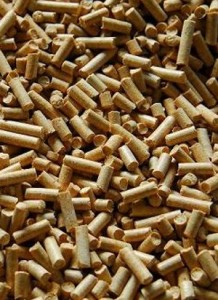 More people are starting to learning how to make wood pellets at home now that more small scale wood pellet machines are available. Here are the basics of how the pellet manufacturing process works. And if you already know the basics, and want a more details about how to manufacture wood pellets, you can get it here.
More people are starting to learning how to make wood pellets at home now that more small scale wood pellet machines are available. Here are the basics of how the pellet manufacturing process works. And if you already know the basics, and want a more details about how to manufacture wood pellets, you can get it here.
A pellet can be made from wood and just about any other biomass including straw, cardboard, grass, and other plant material. The pellet is made by compressing the material so that it becomes very dense and becomes glued together by natural binding agents or added binders.
In order to make pellets, the raw material must be small, like sawdust. For larger pieces of wood, they will usually be chipped, and then reduced even more with a hammer mill. After drying and conditioning, the material is fed into the pellet mill.
The pellet is made by forcing the material into a die that is full of pellet sized holes. The top of the holes are tapered like a funnel, so as the material is forced in, it is compressed as the hole get smaller and smaller. This creates a dense pellet and also creates heat from the compression and the friction. This heat melts the binding agents in the wood, which acts as a glue that will hold the pellet together after it cools.
For many materials like wood, especially resinous softwoods like fir and pine, there are enough natural lignins in the wood to bind the pellet. But with some other forms of biomass, additional binding agents will need to be added before the material is pelletized. Binding agents usually come from organic material like vegetable oil or starches.
The power to shove the material into the die usually comes from a roller. The roller passes over the die and anything between the roller and die has to go somewhere, so it gets forced into the holes. There are flat dies, where the roller goes back and forth over it, and maybe more common is the ring die. With a ring die, the roller goes around the inside of the ring and pushes the pellets through to the outside of the ring.
After the pellets come out of the die, they are cooled and ready to be bagged. Bagging them or otherwise sealing them up is important to keep the pellets from absorbing moisture from the air if left .
You can get a more in depth education about how to make wood pellets with this pellet guide, and even learn how to make your own pellets.
